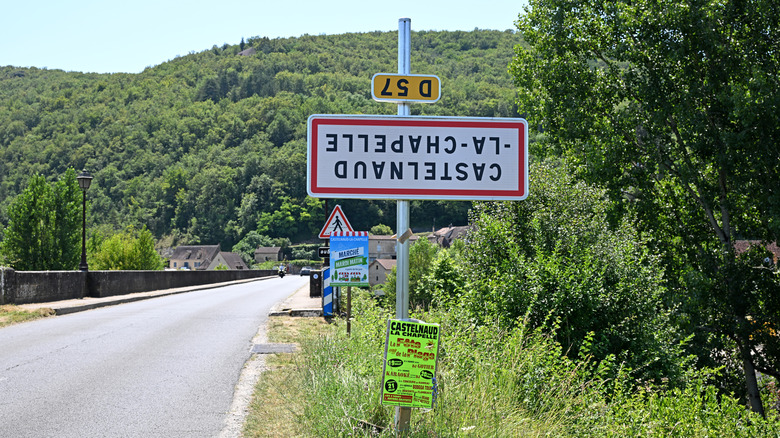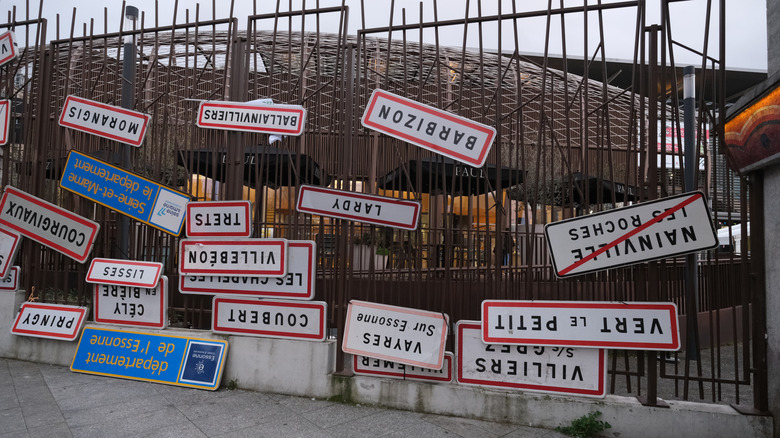Why You Might See Upside-Down Road Signs In Some French Villages
The French countryside is perfect for a slow vacation where you take the time to soak in the sights. Amidst the winding roads, rolling hills, and picturesque towns like the quaint Saint-Victor-la-Coste, which is replete with local wine and natural beauty, you'll even come across some quirky sights. Since 2023, visitors to some French villages have been flummoxed by street signs that are inexplicably upside down. The inverted signage is generally boards with town and commune names, and while you won't see it everywhere, the phenomenon was widespread at one point. The signs are still readable and have not been altered in any other way. In fact, they are carefully screwed back in place, just upside down.
If you've brushed up on French phrases to know before your trip to France, your best bet is to have a local to explain to you what the inverted signs mean. Simply put, they are a form of protest by farmer unions in rural France against deteriorating conditions. Chief complaints have included price hikes for farm diesel, increased competition from imports, and delays in farm subsidies. The protests are aimed at the French government, which, according to some farmers, hasn't been decisive in addressing their concerns. The contradicting messaging from the government was likened to walking on one's head and symbolized by thousands of upturned signs.
First seen around Tarn in the Occitanie region of Southern France, the idea quickly caught on and spread to several other areas with an estimated 800 signs flipped over. The movement eventually escalated to protests and resulted in the ending of a tax on farm diesel and protection for local French produce. However, what followed was an even more sign-oriented protest.
This French protest went from upside-down to swapped road signs
The initial 2023 protests, which started with upturned signs, eventually escalated to farmers blocking highways with their tractors and dumping cheap imported produce that was hurting their livelihoods. While farmer protests had earlier occured in other European countries like Germany, those in France, which is the European Union's largest agricultural producer, were more widespread and covered several rural areas of the country. Demonstrations were generally focused on the government noticing the increasingly difficult lives of rural farmers due to their organic produce not generating sufficient financial returns and the additional red tape that farmers had to deal with due to French laws.
While the large-scale protests eventually died down, in late 2024, the name signs of several small towns and villages across areas like Tarn and Dordogne started to change completely. Local protesters escalated their brand of sign protest by actually swapping the name boards of several hundred French communes. Unlike the previous protests, which were satisfactorily resolved with the government addressing farmers' concerns, these protests were localised. They demanded government relief after a particularly poor growing season, which was further exacerbated by a disease epidemic affecting livestock.
While the protests seem to have died down now, if you're making your way through Southern France, eat like a local and try and support local businesses and produce. Since some of those swapped signs may still be around, don't be alarmed if the name boards of villages like Négrondes, La Coquille, Agonac, Brantôme, Borrèze, Montignac-Lascaux, and a few others don't match what your map says.

